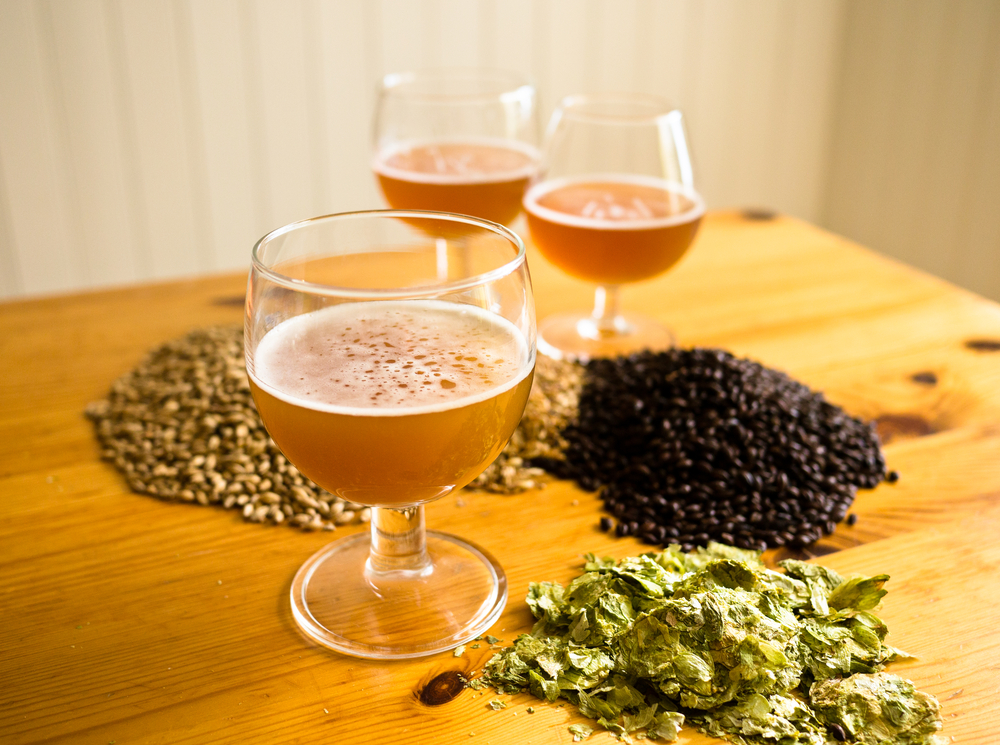The Growing Trend of Home Brewing

O’zapftis’! The keg is tapped!
If that phrase is heard inside your property, there’s a good bet its coming from a home brewer. Home beer making is gaining in popularity and may very well be happening at your properties.
Homemade craft beers percolate quietly behind closed doors and in dark closets. Novice brew meisters ply their craft in kitchens, spare bathrooms, basements and garages in hopes of making the perfect wort to ferment into beer.
Right now, Oktoberfest serves as the perfect venue for home brewers and beer lovers to rejoice, compare notes, and sample a growing variety of beers that are taking America by storm, or suds. Actually, home brewing is legal in most states and goes on without much brouhaha. Some 1.2 million home brewers concoct their special recipes or imitate their favorite commercial brew standing over stoves and stirring pots.
Home brewing gaining in popularity and isn’t rocket science
Home brewers are growing in numbers. The American Homebrewing Association’s annual survey of supply shops notes that in 2013 there was a 24 percent increase in sales of beginner homebrew equipment kits. Most were purchased by 30-39 year olds, a key demographic for rental housing.
Leasing professionals recently weighed in on whether home brewing should be permitted in their properties. Those who don’t cite potential property damage and inconvenience to neighbors from brewing say, “no big deal.” Others plan to require plenty of renter’s insurance.
As with many hobbies, levels of brewing vary. Usually, home brewing is about as sophisticated as a boiling stew, maybe a little messier. Home brewers typically don’t wear a white lab coat and safety goggles and work in a labyrinth of pipes and baffles while steam rises from a boiling kettle, experts say.
“It’s cooking,” says Lymon Liu, who began home brewing four years ago and now sells his product commercially. “The basic process is you cook the malt. A normal kitchen stove will work.”
Brewing beer is different than making distilled spirits
Beer is created from wort, which is fermented cooked grains and/or malt extracts. The home brewing process includes cooking the wort, cooling the liquid, fermenting in a large container, and then filtering the brew. Then, brewers use relatively low levels of CO2 to bottle or keg the final product. Depending on variety and style, the process usually takes about four or five weeks from start to finish.
As with any type of cooking, dangers exist. Advanced brewers who make their own mash to create the wort may prefer to cook over an open flame using a propane setup, similar to a fish or turkey fryer. That can create potential fire hazards if done indoors. But, unlike making liquor, the cooking process is minimal and excessive high heat doesn’t have to be a factor.
Former MillerCoors executive Randy Golden, now a beer industry consultant, isn’t a home brewer but says making beer isn’t nearly as difficult and dangerous as making distilled spirits.
“It’s so much different than making a grain alcohol,” he said. “That has to stay at a high temperature for a sustained amount of time. You create condensation off of that, and you’re boiling and separating water from alcohol. It’s a lot more involved than if you’re home brewing.”
Home brewing can create property issues, annoy residents in some cases
Golden and Liu agree that, aside from a cooking accident, the biggest cause for concern for a landlord likely would be the potential from property damage resulting from spills and cleanup, substantiating claims that home brewers should have renter’s insurance. Maintaining a highly sanitized environment, Liu says, is essential to brewing quality beer. It’s easy to make a mess if the brewer isn’t careful. A good brewer will spend more time cleaning than cooking or brewing.
“At times you will spill things,” said Liu, who crafts beer from local honey. “Those are highly concentrated sugar malts, in my case, honey. Not everybody has good habits.”
Another drawback potentially is the piquant aroma from mashing, or cooking hops and other grains to make the wort. Hops, barley and other grains emit a heady scent that is distinct and unpleasant to many, and could draw complaints from neighbors.
Of course, the brewer could be injured during cooking or handling the materials. Carboys, or glass bottles used to ferment beer, can be broken and injure the handler.
Craft beer renaissance fuels home brew hobby that is here to stay
Golden says home brewing is a sign of the times as brewers try to put their unique spin on their work. The U.S. is in a beer renaissance now, with a surge in startup local breweries that are creating specialty brews as unique as the brewers. Many small commercial beer makers, including Liu, started in their garages.
Understandably home beer making is gaining momentum, and it’s something that landlords may have to deal with more. Golden says most beer meisters are brewing purely for the joy of creating something that tastes good and nothing else.
“With so many beers out there, for somebody to home brew, they’re doing it purely as a hobby,” he said. “For a landlord not allowing or allowing a home brew, it’s an issue that you would never have thought of five or six years ago.”







